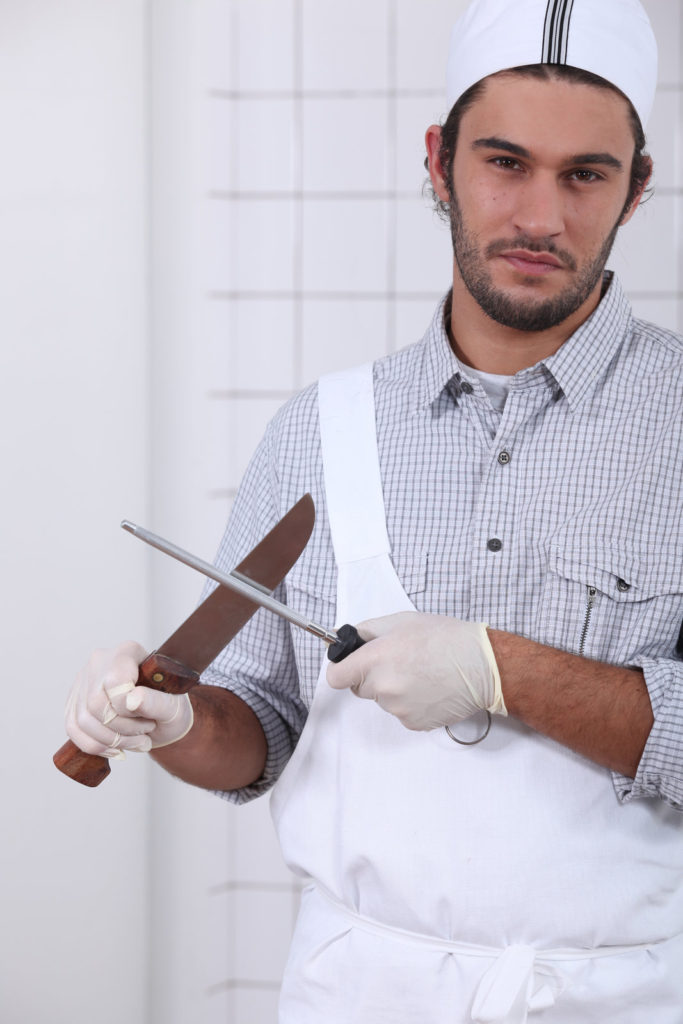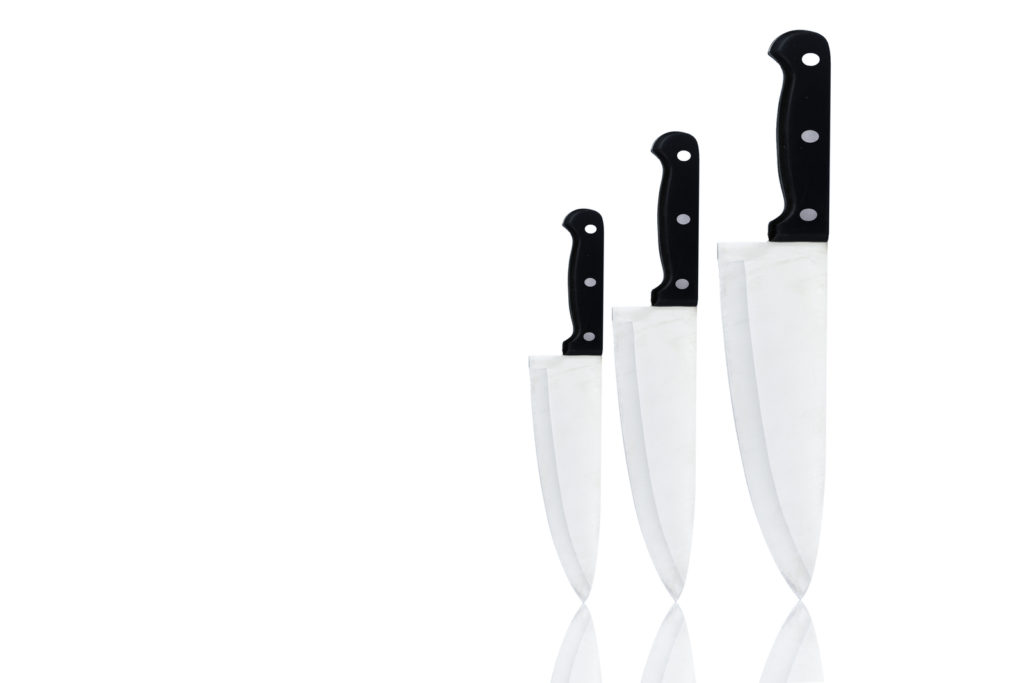There are many different Japanese chef knives, so it can not be easy to pick which one is right for you. Below are some of the different types of chef knives so that you can understand them better.
Kitchen Knives
Kitchen knives are usually lighter but also less sturdy compared to Japanese chef knives. They’re meant for precise slicing and cutting of vegetables, meats, and cheeses for garnish. Thinner blades mean you can carry out exact cuts without needing as much strength from your arm.
Santoku Knives
Santoku knives are considered a lighter version of chef knives. They’re generally shorter and skinnier, but not too light – they’re still heavier than kitchen knives! But its weight is more even throughout the knife, making it easier to control than a normal chef knife. It has a wider edge than a chef’s knife, which makes it perfect for chopping vegetables.
Grindstone knives (Waterstones)
Grindstones knives (also known as Waterstones or whetstones) are sharpened using a grindstone, oil, and water mixture. They’re very sharp but also more delicate than Japanese chef knives. They require more upkeep because they get dull quickly (compared to steel knives) and can’t be used with food materials (like bones).
Japanese Knives
Japanese chef knives are the sharpest out of these three types but also the least sturdy – using one of these knives requires a careful and deliberate hand. They’re sharpened on just one side, so they can be used for both push and pull cutting.
Knife set
A knife set is a collection of knives, usually including everything from a chef’s knife to filleting knives. They’re usually the least expensive options for beginners but also less versatile and dangerous if not used correctly.

Vegetable knives
Vegetable knives are very small and have curved blades, perfect for slicing soft vegetables or boneless meats.
Slicing knife
Slicing knives are long and slim, with a pointed tip to allow you to cut thin slices of meat from large cuts. (https://www.originalekniver.no)
Peeling knife
Paring knives have smaller blades than chef knives, making them perfect for peeling fruit or vegetables.
Santoku knives
Santoku knives have a wide, flat blade that’s great for slicing and chopping vegetables. They’re often recommended as the best knife to learn on – not too sharp nor too heavy. (https://www.originalekniver.no/kokkekniv/)
Sushi knife
Sushi knives are also known as ‘Yanagiba’ and usually have a single sharp edge.
Universal knives
Universal knives (or utility knives) are light and versatile, making them ideal for beginner cooks. However, they’re not particularly sharp or sturdy, meaning they’re more likely to slip and cut you if you use them incorrectly! (https://www.originalekniver.no/kjokkenutstyr/)
Boning knife
A boning knife is very thin and flexible, making it perfect for skinning and deboning meats.
Filleting knife
Filleting knives (or fish filleting knives) are also extremely sharp and narrow, making them perfect for sushi knives!
Bread knife
Bread knives have serrated blades to slice through bread without squishing it easily.
Whetstone
A whetstone is a block of coarse rock, usually Japanese natural sharpening stones or ceramic/enamel on steel. They’re used to hone kitchen knives between sharpening’s; they’re just a way to remove some material from the edge of the blade to help keep it sharp!
Conclusion
Chef knives are used for different purposes – the best knife depends on what you’re cooking and how much money you want to spend. Chefs’ knives can be great beginner knives (though they require more muscle power), but Japanese knives are lighter and sharper – if you want something easier to use, go with a Santoku or Santoku style knife.
